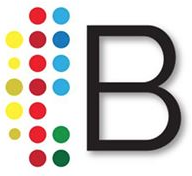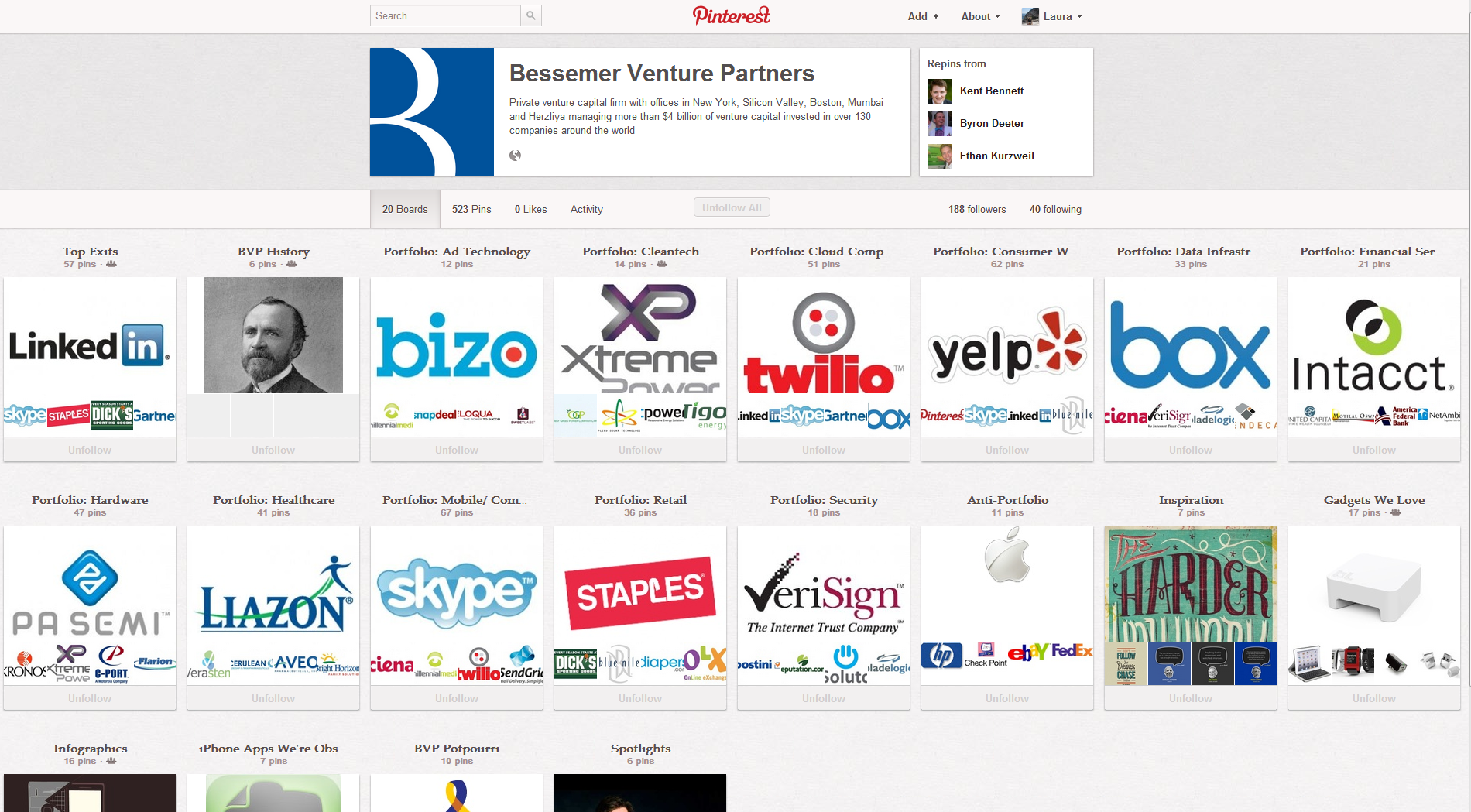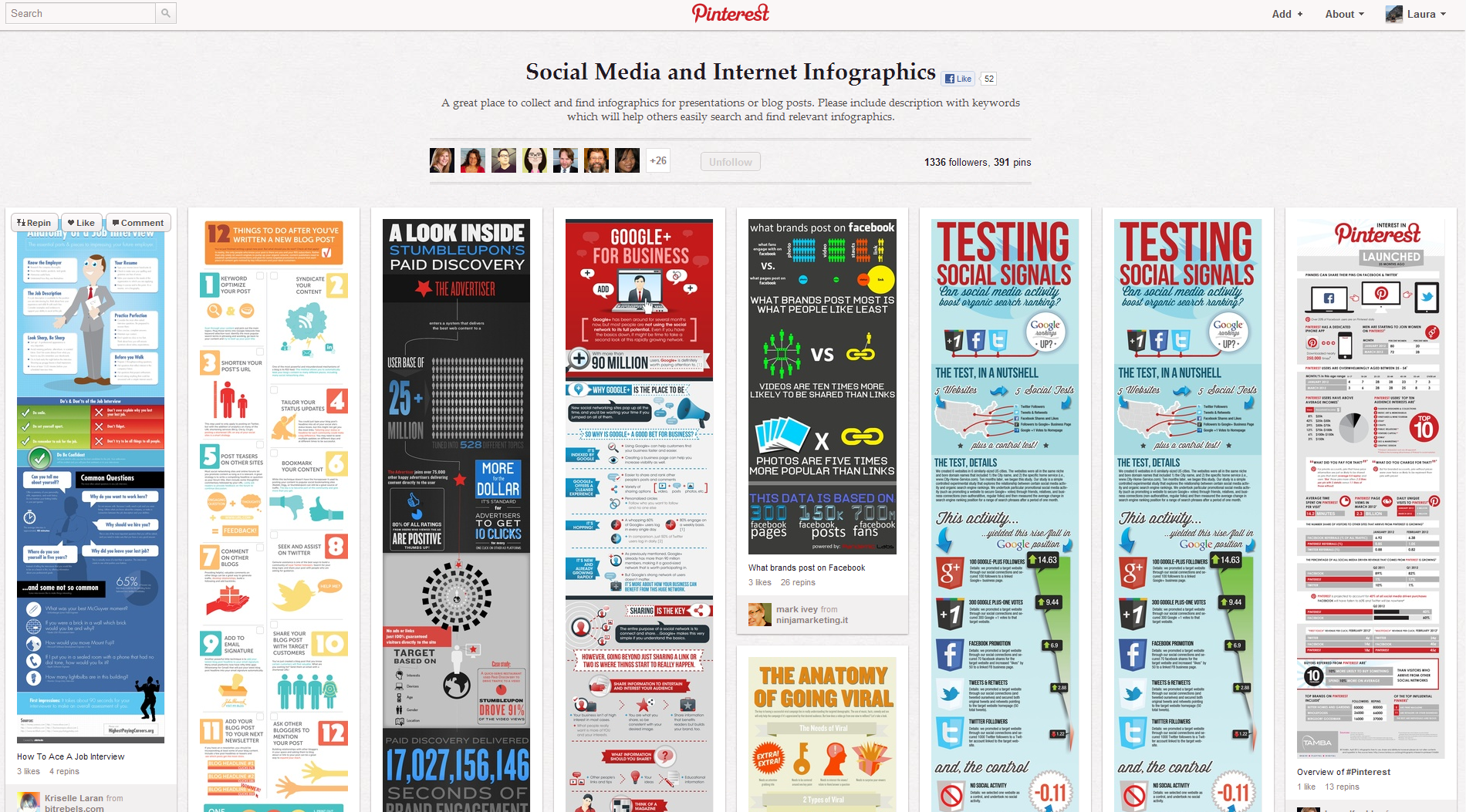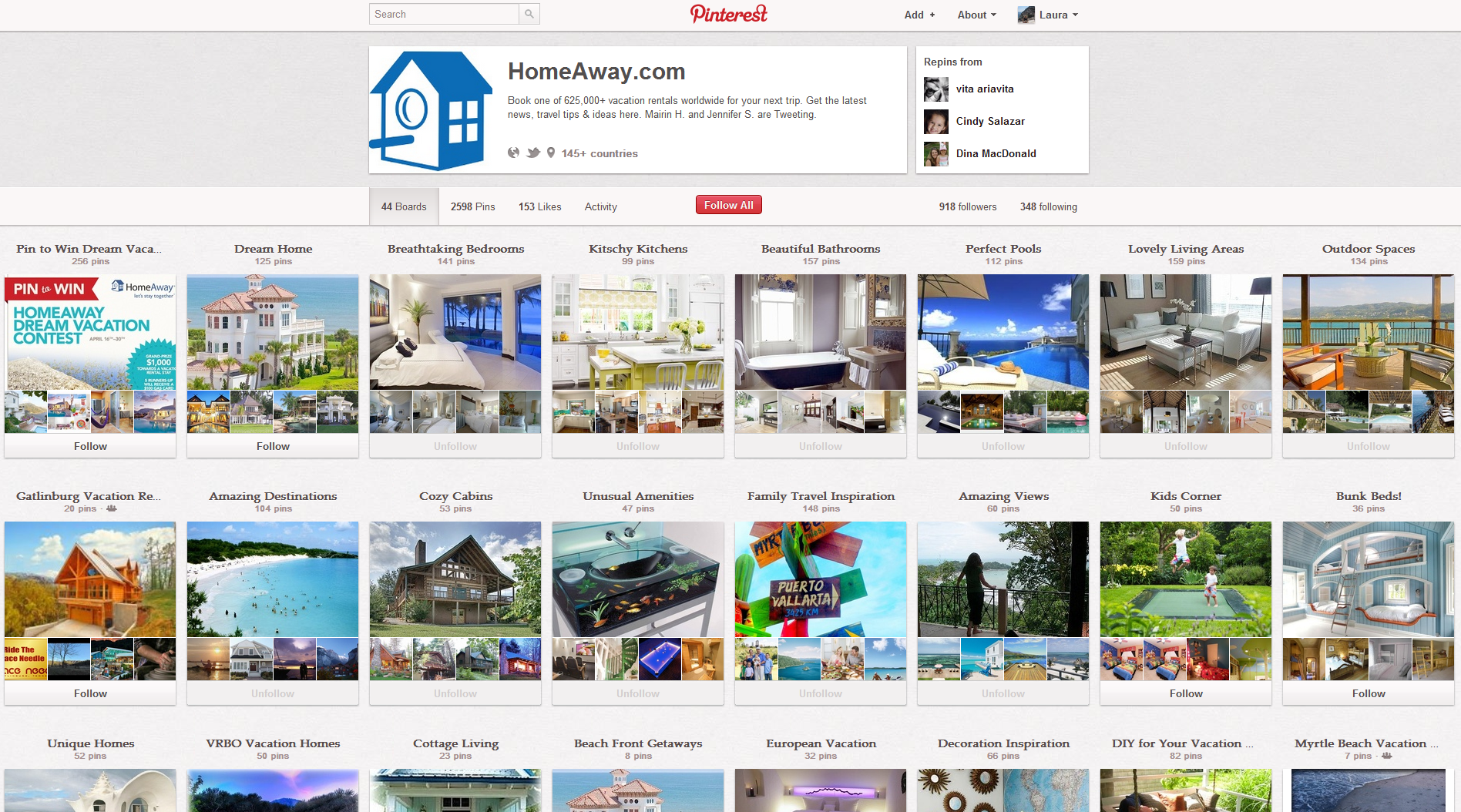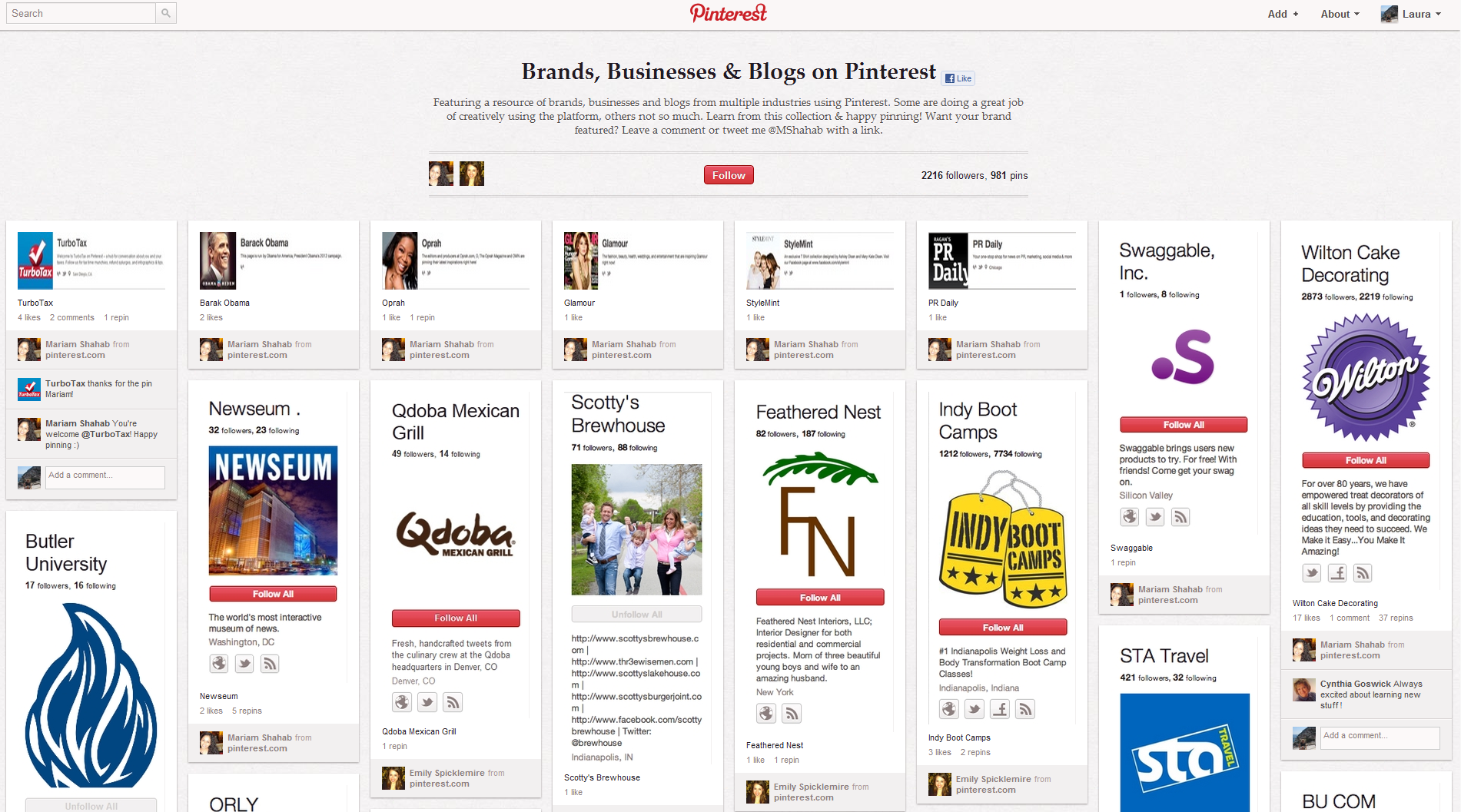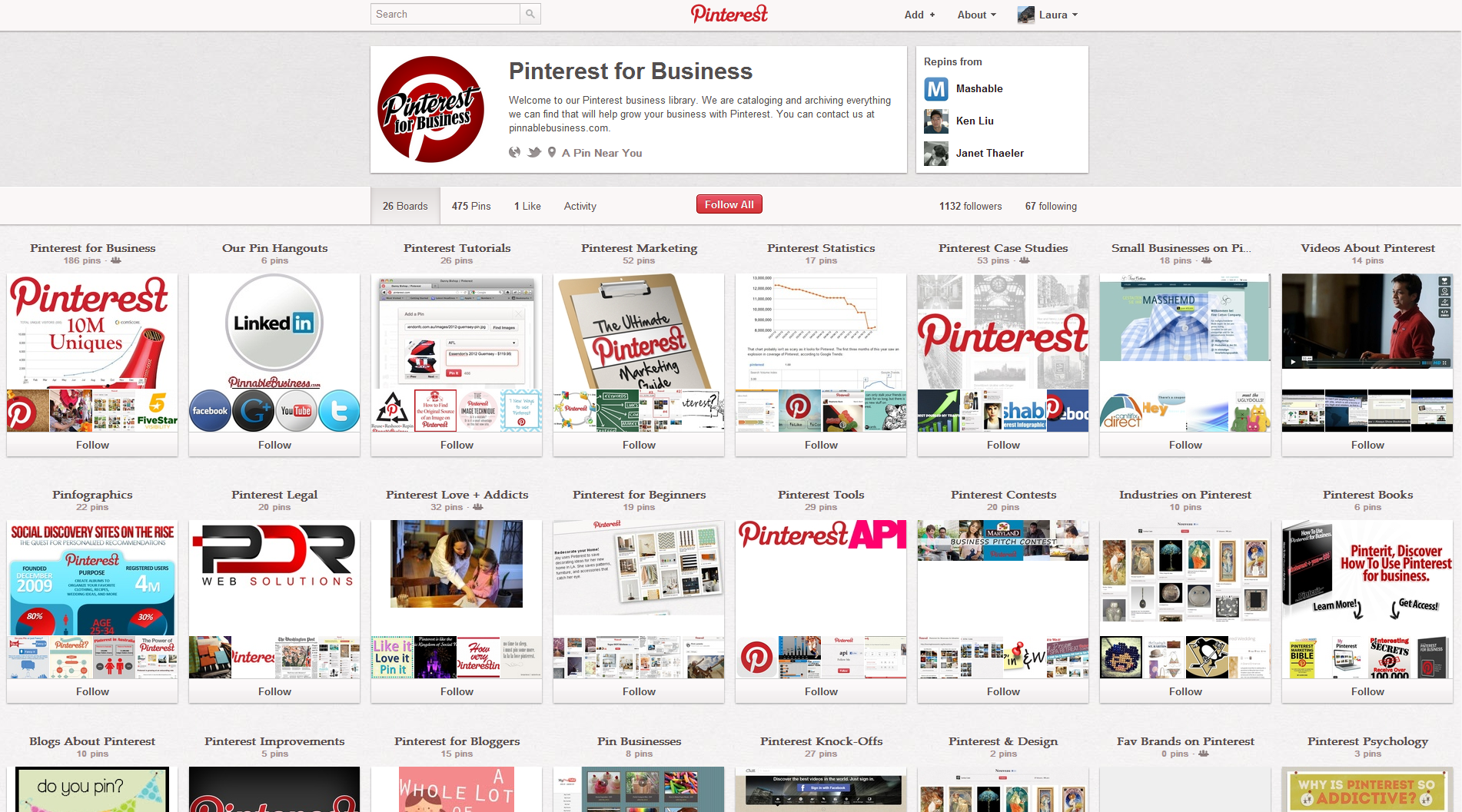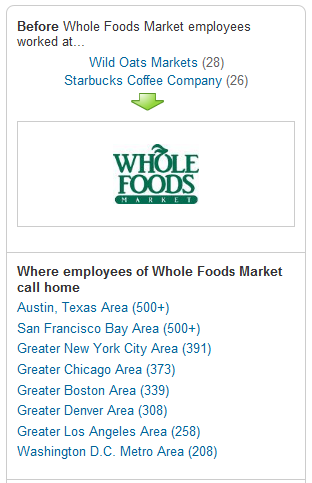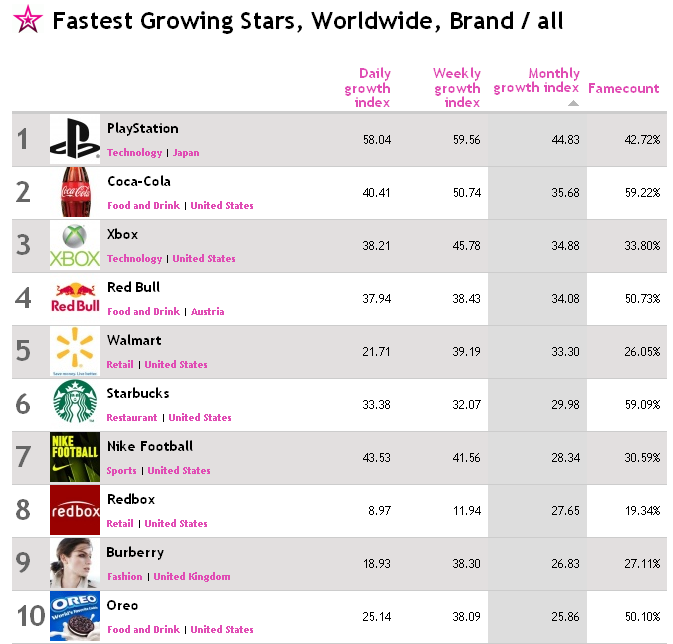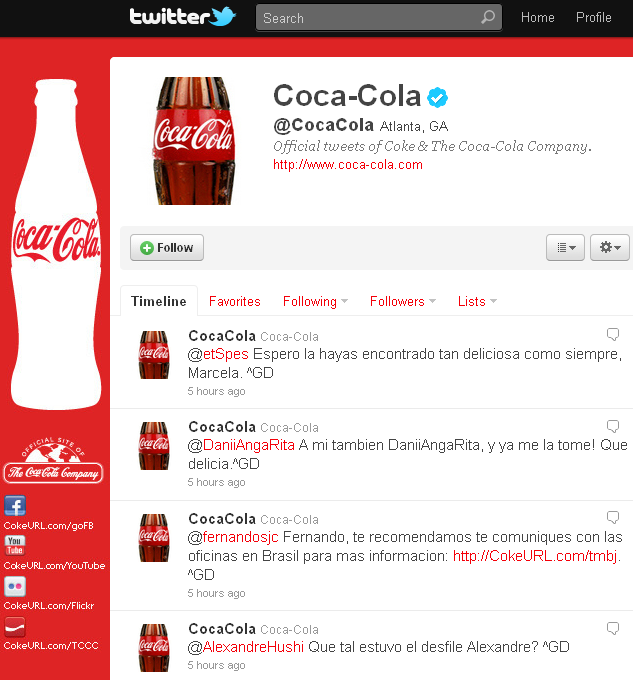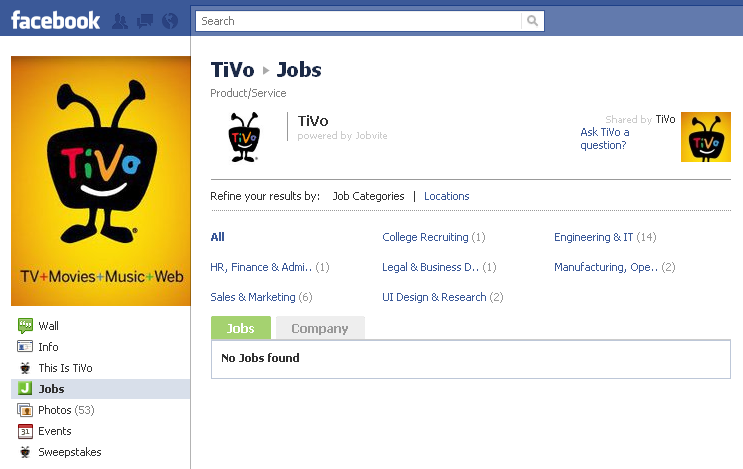We've talked before about using Pinterest for business research, and today we're unveiling our new Pinterest page. Give us a follow and we'll do our best to keep you informed not only with all things business research, but some fun things as well.
MEB's 10 Tips for Searching LinkedIn
Mary Ellen Bates of Bates Information Services recently posted a great presentation called "Top Ten Tips for Searching LinkedIn". Lots of really great tips and tricks. Mary Ellen will also be speaking at this year's Special Library Association Annual Conference in Chicago on Tuesday, July 17th. Her program is called "From Info Pro to Info Hero: 5 Easy Ways to turn Information into Insight". We're excited to hear her ideas. In the meantime you can check out her LinkedIn tips below:
LinkedIn Maps
Here at bizologie we are suckers for all things map-tastic, so we can’t resist talking about one more that just crossed our radar. One of our favorite resources, LinkedIn, has come out with a map site in which you log in to your account from this page and see a nifty cloud of color-coded relationships that LinkedIn generates using your contacts. The great thing is that it’s interactive. Zoom in and click on a node (i.e. a person) and see all of their shared connection to you. You can also assign labels to the clusters to help you remember, for example, what the green cloud means and what the orange cloud means.
So it looks good, but what does it do if it doesn’t land you a job, or tweak your resume, or pinpoint your salary range? My advice is to take a few minutes to examine the nodes that are not densely interconnected. A handful of your links in disparate clusters might have really long lines that span a couple of colors (if these were airplane flights, they’d be the ones going from New York to Hong Kong).
By investigating those nodes you might find that people you wouldn’t consider knowing one another are in fact connected. I myself discovered a couple of surprising links in my contacts between people that I know at different institutions. And from that knowledge you’ll have fodder to start interesting conversations during the next office happy hour, which could lead to all sorts of new opportunities. Cue the Kumbaya!
Pinterest for Business Research
Clearly, we all love Pinterest. It's the fastest growing social network and shoppers spend more money via Pinterest than Facebook. But can you do more than pin recipes, shoes and interior design? Well, yes! You can do business research! Now of course, it's not the first place we'd turn for business research, but you can still learn plenty of interesting things about a company on Pinterest. You can find out about a company's culture, how they interact with their customers and what things they value. You might even pick up on future company plans. Even venture capital firms have Pinterest pages. Here are a few Pinterest pages and boards we think are good examples of using Pinterest to learn about companies and industries: Bessemer Venture Partners: Bessemer is a large venture capital firm and you can learn a lot about them on their Pinterest page. They've got their portfolios and exits pinned, and they even have boards dedicated to portfolio companies by industry.
Pinterest is a great place to find infographics. Here's a board dedicated to Social Media & Internet Infographics:
HomeAway, a site for vacation rentals, engages their customers not only with vacation homes to stay in, but also, contests and interior design ideas:
This board is dedicated to "Brands, Businesses & Blogs"--this is a quick way to see how lots of different companies are using Pinterest:
There's even a page to help businesses succeed with their Pinterest campaigns:
Networking for Introverts (and Extroverts)
This excellent presentation by Marcy Phelps at the Special Libraries Association Rocky Mountain Chapter Virtual Lunch, was titled Power Networking for Introverts, but really is applicable for even the most extroverted. Making a real connection at a networking event or association meeting can be difficult for anyone. Learn some myths of networking and how you can make the most of the time you spend networking. To see the archived virtual lunch presentation, visit the Rocky Mountain Chapter. I like how Marcy redefines networking as connecting. As librarians we are good at making connections for people and helping them find the information they need. If we think about those goals for networking, and not what we can get out of it by marketing ourselves, I think that makes it easier. Phelps also recommends putting your social network to good use too. Join groups and make recommendations on LinkedIn and use Twiter hashtags.
If you are an introvert like Marcy, fear not. She explains that you are actually better networkers, because you are much more likely to listen. If you are interested in more information about Introverts and their rise to the top, Marcy recommends the book Quiet: The Power of Introverts in a World That Can't Stop Talking
 As the founder and president of Denver-based Phelps Research, Marcy Phelps provides business research and analysis for marketing professionals and info pros. Marcy is the author of Research on Main Street: Using the Web to Find Local Business and Market Information (Information Today, Inc., April 2011). She also blogs about turning information into insights at www.MarcyPhelps.com and publishes ResearchNOTES, a monthly email bulletin with tips and sites for web searching.This is not the first time bizologie has featured the good works of Marcy. Check out the post about her book Research on Main Street.
As the founder and president of Denver-based Phelps Research, Marcy Phelps provides business research and analysis for marketing professionals and info pros. Marcy is the author of Research on Main Street: Using the Web to Find Local Business and Market Information (Information Today, Inc., April 2011). She also blogs about turning information into insights at www.MarcyPhelps.com and publishes ResearchNOTES, a monthly email bulletin with tips and sites for web searching.This is not the first time bizologie has featured the good works of Marcy. Check out the post about her book Research on Main Street.
Social Media for Career Advancement
Whether you are looking for a job or just staying connected to your professional community, social media is extremely important to your image. Social Media is your new online resume. According to Jobvite's Social Recruiting Survey, 89% of US companies will use Social Networking for recruiting. And, 58% of these companies recruit passive candidates, so even if you aren't looking, they are! Will they find you? How can you use social media for your career advancement? First things first, check your online reputation because others are. Google yourself and see if what comes up is appropriate. Google has tips for you if you find something that needs to be removed. Use Reppler.com to help keep your Facebook page clean and safe. It reads your posts and rates how positive you are plus gives you tips on creating a more secure page.
Of the companies surveyed by Jobvite, 87% use LinkedIn and 2/3 use two or more networks for recruiting.
LinkedIn is really only useful if you build a robust profile and make it public so people can find you. Include detail and be keyword savvy by selecting words that are used in the industry.
- Photo - add a professional head shot
- Headline - slogan for your personal brand
- Summary - highlight your unique skills and specialties
- Experience - this should read like your resume
- Groups - be a joiner and contribute questions and answers, create your own group, you can edit the visibility of each group for more privacy
- Public Profile - claim your public profile URL and make it public then use address on cards, blogs, email sig
- Make connections - add your business cards, search by company, schools, association, add the app to your phone
- Ask for Introductions - write it up and then ask your contact to pass it on
- Ask for recommendations
- Add your company website, blog and Twitter account
Once you have your LinkedIn info added, you can use Re.vu to make a visual resume. A cool infographic of your work experience will really grab the hiring manager's attention.
Since recruiters also use Facebook and Twitter you need to make sure you have a professional presence there:
- Add the Branch Out app to turn your Facebook friends into professional connections
- Set up a professional account for Twitter
- Update your bio and link to your resume
- Learn to use Hash tags add keywords
- Twitter job search sites: TwitJobSearch, TweetMyJobs, jobshouts
- Follow people--OneDayOneJob has a nice list of 50 Twitter Users to Follow for Your Job Search
Glassdoor has free salary information by title and company. There are also company reviews. If you sign up and provide your salary information, you get access to all the salaries and reviews. You can also see if your Facebook friends have any company connections.
If you need help reworking or updating your resume, check out these resume guidelines from the Career Design Center of the College of Natural Sciences at the University of Texas at Austin.
Using LinkedIn for Company Research
We know LinkedIn is a great place to start when you're researching individuals but it's also a great place to find some pretty helpful company statistics. In the LinkedIn Search box, change the drop down menu to search for companies and plug in the company you're interested in finding out more about. Using Whole Foods as an example, on the first page I can find out who I'm connected to at Whole Foods, who some of the new hires are, new job postings and position changes within the company. One really cool feature is in the right hand sidebar: "Check out insightful statistics about Whole Foods Market employees". On this page I can see that 66% of Whole Foods employees have a bachelor degree and that before going to work for Whole Foods, most employees worked for Wild Oats Market and Starbucks. There's even a tab showing where most employees went to college. In this instance, most employees went to the University of Texas at Austin. Which, of course, makes sense as Whole Foods' home office is in Austin. What's interesting is that there are also several employees from Colorado State University and the University of Colorado at Boulder. This also makes sense as we know that most employees came from Wild Oats which had its headquarters in Boulder, Colorado and was for a time owned by Whole Foods. It's important to remember that these statistics are based solely on the information provided by employees on LinkedIn, but it's easy to start to paint a picture of the culture and types of employees.
Are you using LinkedIn or another social media tool in different ways to do business research? Tell us about it in the comments.
Social Media Plan Template
Marketo is offering a free Social Media Plan template. The plan includes the tactical objectives you can use to accomplish two primary goals of social media. Download the Social Media Tactical Plan Template below, and find out where to budget your time and resources to maximize your organization's social media efforts. The customizable social media tactical plan helps you:
- Measure the value of social media strategies
- Efficiently create tactical objectives
- Drive more unique traffic to your website
- Convert anonymous traffic to known visitors
It's a simple template, and you probably actually know what you should be doing already, but the template will help you outline the necessary steps to keep track of your social media and provide you with some ideas for how to measure your success.
Social Media Map
Trying to keep up with all the social media platforms available can be pretty overwhelming. Luckily the folks over at Overdrive Interactive make it easy for us with this great Social Media Map. You can download the map for free after providing some basic information and the downloadable PDF comes with live links.
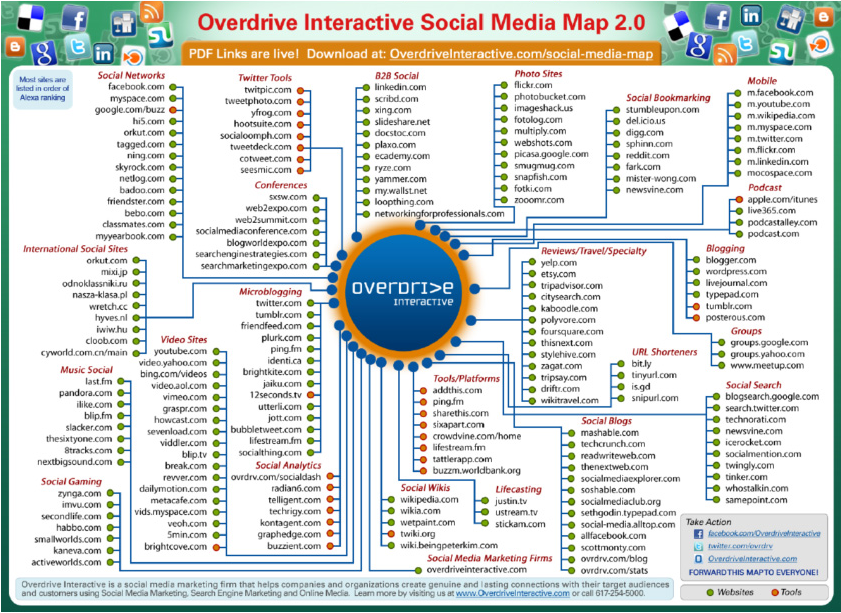
Google's +1 is active--Do you "like" it?
Google just launched their new +1 service which allows you to "publicly give something your stamp of approval". Or in Facebook terms, "like" it. Right now it's still part of Google Labs and you have to opt-in to try it out, which you can do here. I gave it a spin today and there are some cool and not-so-cool things about it. It all depends on how comfortable you are having your name publicly associated with the links you choose to endorse. And "endorse" is a good word since your +1's can be used in Google Ads. So it's important to have your Google Profile set up with the right privacy settings so that you can make sure your Picasa Web Albums and the like aren't available to just anyone. That said, I like that once you've opted in, you'll have a new tab on your Google Profile keeping track of all the links you've +1'd along the way. Do we say +1'd now instead of "liked"? So hard to keep up. You can choose to make your tab public or not, but either way it's a nice handy list to refer back to:
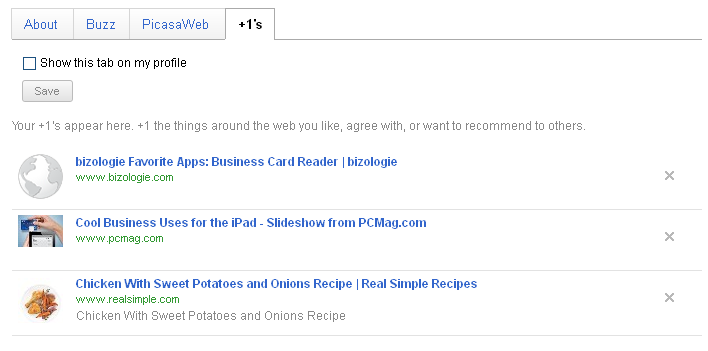 The video below will tell you a bit more about how it works and you can read more about it on Google's +1 Page. Tell us what you think about +1 in the comments section.
The video below will tell you a bit more about how it works and you can read more about it on Google's +1 Page. Tell us what you think about +1 in the comments section.
Famecount: Social Media's Most Popular Brands
Last week we talked about corporate use of social media and today we're going to see which brands and companies are the most popular. Famecount keeps track of brands, celebrities, media, sports, games, music and politicians on Facebook, YouTube and Twitter. They'll give you rankings for each service by region and they also break down each category so you can come up with some pretty specific charts. On the "Facebook Stars" tab, I can break down the brand category to Auto, Food & Drink, Fashion, Restaurant, Retail and Technology. These charts will show me the total number of fans as well as fans per month, week and day:
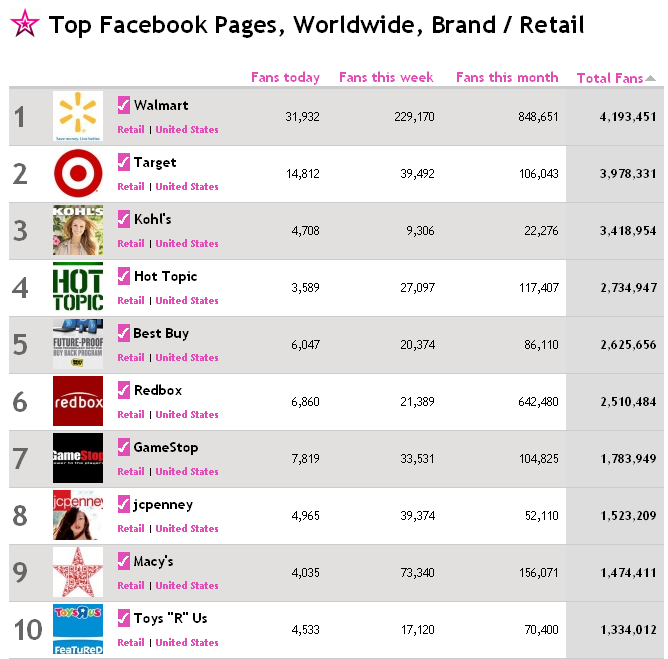
I can also see most popular brands over all channels combined:
And trends of the fastest growing brands:
Famecount gets their data directly from the sources and you can read more about how their data is calculated here.
Corporate Use of Social Media
Recently we talked about how SMBs are using social media and today we're going to take a look at how some of the larger corporations put social media to work for them. Burson-Marsteller has a great report out entitled "The Global Social Media Check-up 2011". It's a great report and gives us insight into how some of the Fortune 100 companies use Facebook, Twitter, YouTube, blogs, etc. Over the past year, they report "an 18% increase in FortuneGlobal 100 companies using Twitter, followed by a 14% growth in YouTube channels and a 13% growth in companies using Facebook pages." And typically corporations have more than one account: On average they have 5.8 Twitter accounts, 4.2 Facebook accounts, 2.7 YouTube channels and 6.8 blogs. IBM alone has 76 Twitter accounts! That's a lot of communication, but who's listening? Corporate accounts average about 5,076 followers on Twitter and 87,979 "likes" on Facebook. According to eMarketer, most people follow a brand "to get updates on future products":
Fans and followers can get anything from customer service to a new job. TiVo is among the many companies who post jobs on their Facebook page:
And Glaceau's smartwater is hoping their new YouTube video will go viral:
SMBs Double Use of Twitter
eMarketer reports that small and medium-sized businesses doubled their Twitter usage from 2009 to 2010. According the the “Local Commerce Monitor-Wave 14” study from BIA/Kelsey and ConStat, last year 1 in 5 SMBs used Twitter for local marketing. SMBs' overall use of social media is growing. "Twitter was still behind many other social media tactics, with nearly half (48%) of respondents using Facebook for marketing and a quarter using some other social network." 35% of the SMBs surveyed had increased their use of links and ads on social media sites over the past year, and "46% planned further increases in the next 12 months." 25% of SMBs increased their use of customer ratings and reviews in 2010 and 39% expected to increase usage of reviews before the end of 2011. Not surprisingly, younger businesses (those under 7 years) were more likely to use social media for marketing.
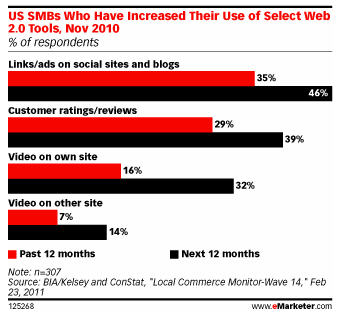
For more on corporate uses of social media, stay tuned to bizologie. Later this week Laura will cover The Global Social Media Check-up 2011 report from Burson-Marsteller.
2010 Digital Year in Review
comScore released their White Paper The 2010 U.S. Digital Year in Review this week. It's available to download for free (you have to provide some basic information) and contains information on Social Networking Trends & Demographics, Top Search Terms, the Online Video Market and the Mobile Market, as well as a look ahead at 2011. Just a few of the interesting facts available:
- Cyber Monday (Monday, November 29, 2010) surpassed $1 billion for the first time--$1.028 billion
- 2010 was the year for group buying (though you probably didn't need an official report to you that) with Groupon jumping over 712% over 2009; LivingSocial is a close second jumping 438%
- In 2010 9 out of 10 Internet users visited a social networking site each month with the average user spending about 4.5 hours a month on these sites
- Facebook grew 38% and became the 4th most visited web property
- The percentage of us who watch TV online continues to grow with Hulu leading the pack--up 17% over last year
- About 27% of us own Smartphones
As you can see, White Papers can be a great source of information and lots of companies provide them freely available on their websites.
